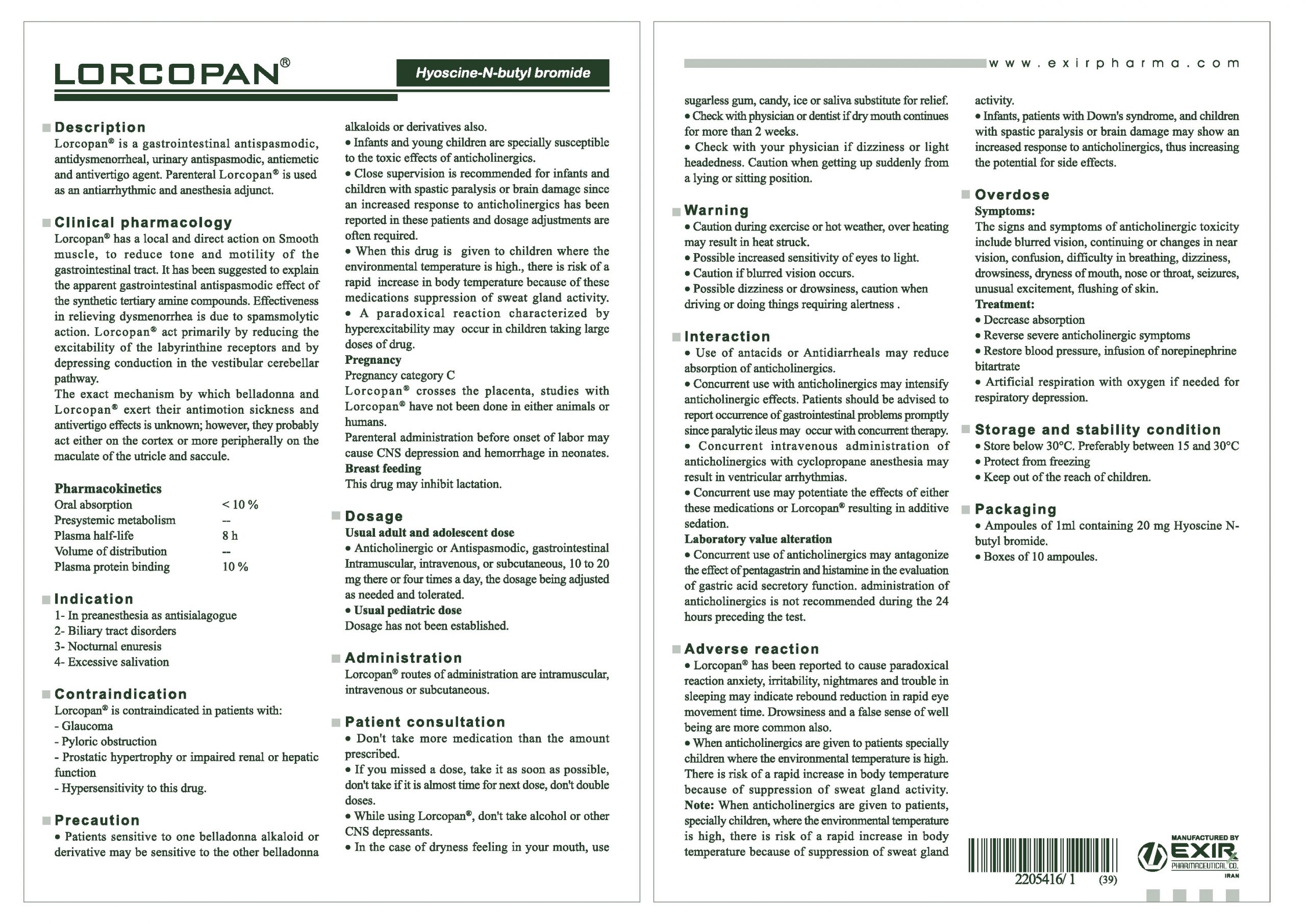HYOSCINE N-BUTYL BROMIDE-EXIR
Ampoule Hyoscine-N-Butyl Bromide 20mg/ml ( 1ml )

| Generic Name of Product | Brand Name | Dosage Form | Strength | Pharmacologic Group | Therapeutic Group | Unit Per Pack |
| Hyoscine N-Butyl Bromide* | - | Tablet / ampoule | 10mg – 20mg/ml(1 ml) | Anticholinergic agent | Gastrointestinal agents | 100 |
Indications And Usage | For the treatment of excessive salivation, colicky abdominal pain, bradycardia, sialorrhoea, diverticulitis, irritable bowel syndrome and motion sickness. |
Administration | Tablets should be swallowed whole with a glass of water. The rapid action of injected is advantageous in acutely ill patients and in those |
Contraindications | patients who have demonstrated prior hypersensitivity to hyoscine butylbromide or any other component of the product, myasthenia gravis, mechanical stenosis in the gastrointestinal tract, paralytical or obstructive ileus, megacolon, narrow angle glaucoma. |
Precautions | In case severe, unexplained abdominal pain persists or worsens, or occurs together with symptoms like fever, nausea, vomiting, changes in bowel movements, abdominal tenderness, decreased blood pressure, fainting, or blood in stool, medical advice should immediately be sought.Hyoscine 10 mg Tablets should be used with caution in conditions characterised by tachycardia such as thyrotoxicosis, cardiac insufficiency or failure and in cardiac surgery where it may further accelerate the heart rate. Due to the risk of anticholinergic complications, caution should be used in patients susceptible to intestinal or urinary outlet obstructions. Because of the possibility that anticholinergics may reduce sweating, Hyoscine should be administered with caution to patients with pyrexia .Elevation of intraocular pressure may be produced by the administration of anticholinergic agents such as Hyoscine in patients with undiagnosed and therefore untreated narrow angle glaucoma. Therefore, patients should seek urgent ophthalmological advice in case they should develop a painful, red eye with loss of vision whilst or after taking Hyoscine. |
Adverse Reactions | More common : Agitation Less common: Bigger, dilated, or enlarged pupils (black part of the eye), blurred vision or other changes in vision, confusion, increased sensitivity of the eyes to light. |
Pregnancy and lactation | Pregnancy: As a precautionary measure hyoscine is not recommended during pregnancy.
Lactation: There is insufficient information on the excretion of hyoscine butylbromide and its metabolites in human milk. A risk to the breastfeeding child cannot be excluded. Use of hyoscine during breastfeeding is not recommended. |
Renal and liver Impairment | renal impairment Rare: urinary retention |
Laboratory Tests | - |

